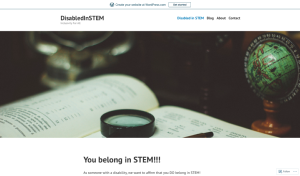General Interest
Back to Top
|
 |
|
It Was Said Podcast
|
Social studies |
|
Speeches can motivate, mourn, and mobilize; after all, "words move humankind for good and for ill." It Was Said, a podcast produced by C13Originals and HISTORY, spotlights famous American speeches that "have been both mirrors and makers of the nation's manners and morals at key moments in our common life." The show is described as a "documentary podcast," as it provides context for "crucial words," helping the listener understand the full story and impact of each speech. Pulitzer-Prize winning author Jon Meacham writes and narrates the show. As of this annotate, the show is on its first season, which includes Meghan McCain's powerful eulogy to her father (Episode 4); President Obama's sermon after the tragedy at Emanuel AME Church in Charleston (Episode 3); and Martin Luther King Jr.'s final speech in Memphis, where he spoke his powerful words, "I've Been to the Mountaintop," (Episode 1). Listeners will find all of these episodes and more at the link above or can subscribe to the podcast on Apple Podcasts, Spotify, and Stitcher. [EMB] |
|





|
|
 |
|
InterEngineering
|
Science |
|
InterEngineering aims to increase inclusivity in the STEM field for members of the LGBT+ community and collaborates with many organizations to achieve this goal. The group's work takes many forms, and readers can learn more about past and future events they have organized under the Blog and Events tabs. On the Publications and Resources page, readers will find valuable reports including "Powering Up the LGBT+ in Engineering" (a summary of discussions about networking, mentorship, and inclusivity for LGBT+ engineers and future engineers) and "What's It Like Being LGBT in Engineering?" (a series of videos profiling the experiences of various LGBT engineers). Want to be the first to know about future events or new reports? Follow them on Twitter, @InterEngLGBT, or subscribe to the mailing list (under the Sign Up tab). Membership to the organization is free and, while InterEngineering is based in London, they have regional groups all over the UK and hope to expand internationally soon. Several sponsors, including the Royal Academy of Engineering and the Institution of Civil Engineers, support their work. [EMB] |
|





|
|
 |
|
 |
|
 |
|
The Planetary Science Journal
|
Science |
|
Meteors, Mercury, moon ice, oh my! Space enthusiasts will delight in the The Planetary Science Journal. Currently on its inaugural volume, the newest project of the American Astronomical Society (AAS) "is an open access journal devoted to recent developments, discoveries, and theories in planetary science" and publishes content relating to "all aspects of investigation of the solar system and other planetary systems." At the link above, readers can browse articles by popularity (e.g., "most cited" or "most read") and date (e.g., "latest articles" or volume number). Articles can be read online or downloaded as PDF or ePub files. Readers will also find instructions on submitting articles (note that an AAS account is required to do so). Notably, "the journal is run by scientists, for scientists," and is led by Ethan Vishniac (who serves as Editor in Chief for all AAS publications) and Editor Faith Vilas. AAS publishes several other space-related journals, which readers will find linked on the Home page. [EMB] |
|





|
|



















